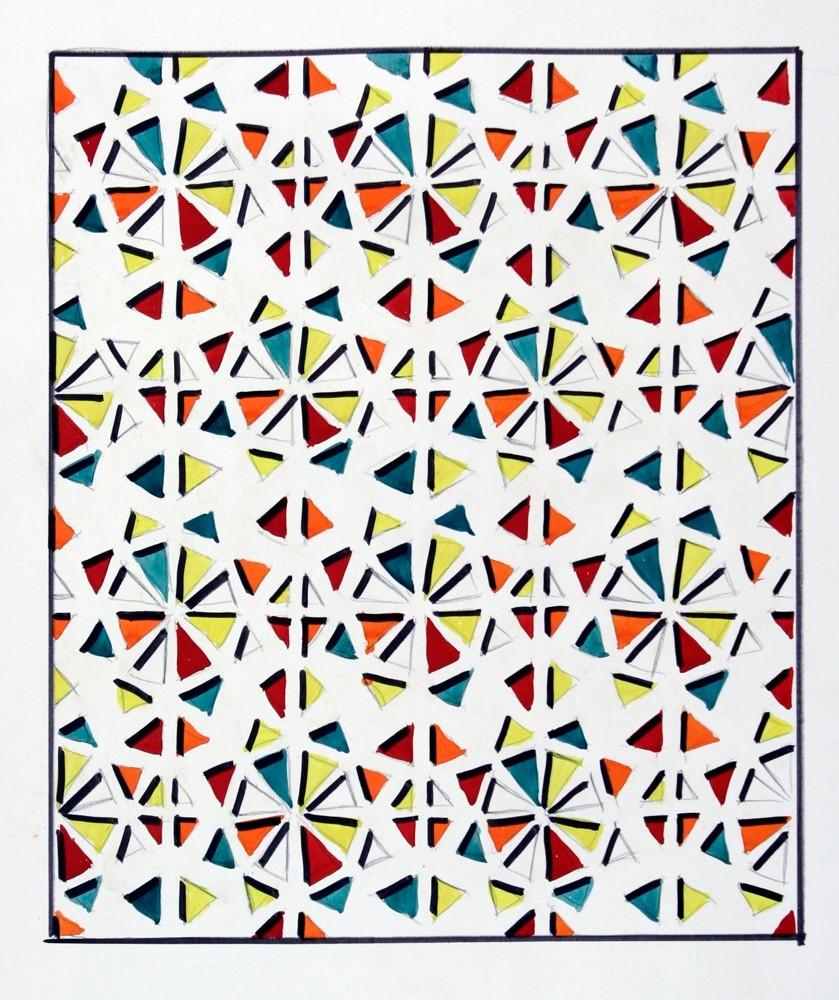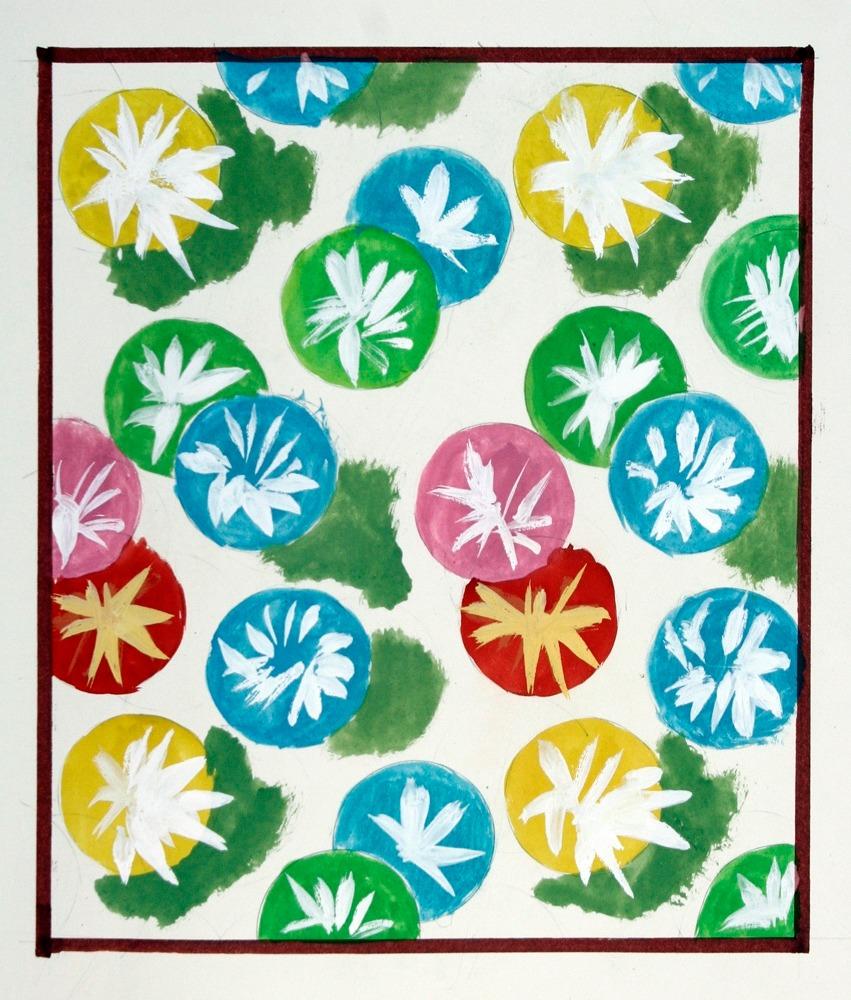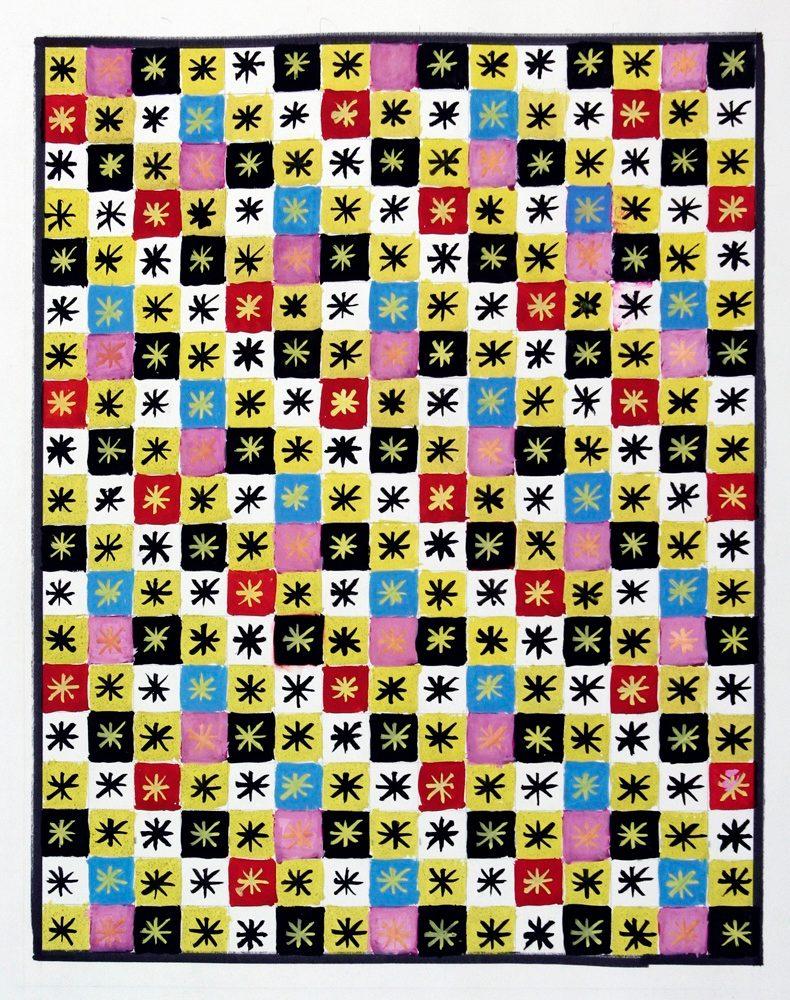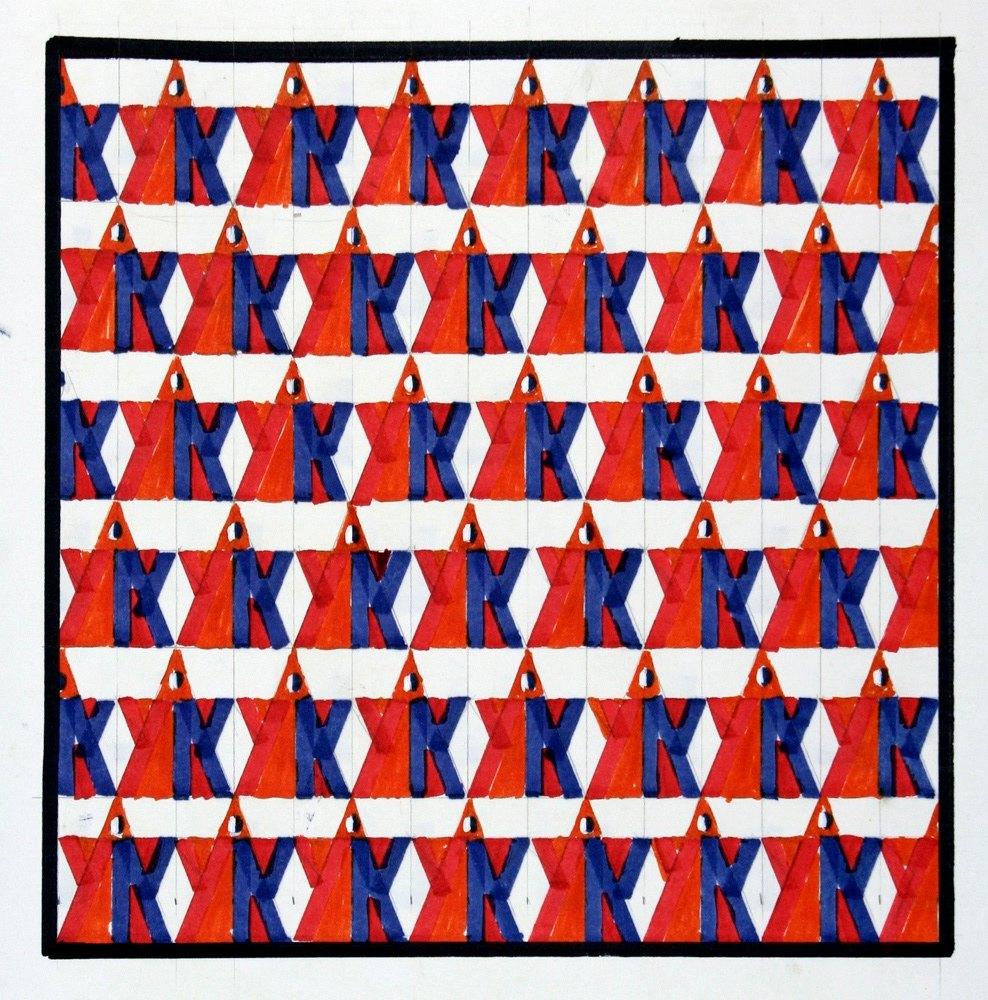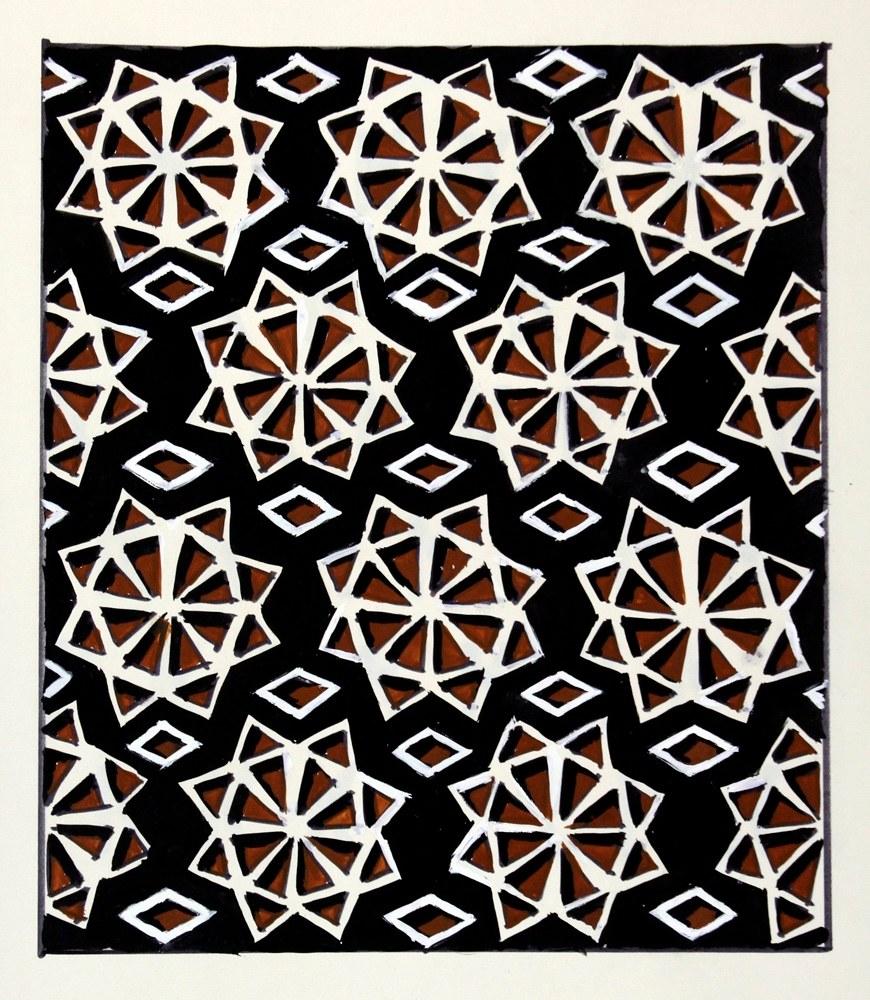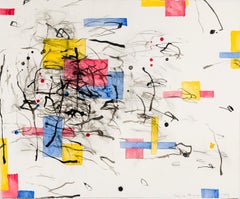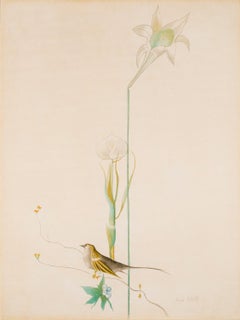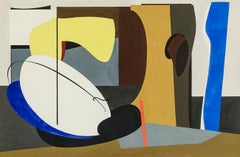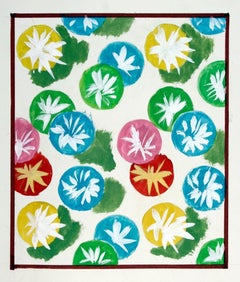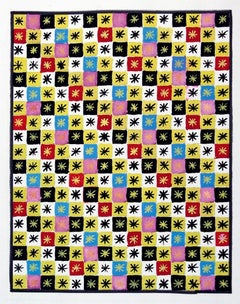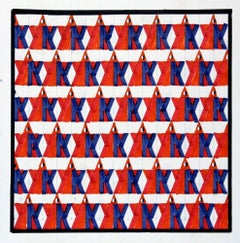Items Similar to Euclid Avenue, Cleveland
Want more images or videos?
Request additional images or videos from the seller
1 of 8
Lawrence Edwin BlazeyEuclid Avenue, Cleveland1930
1930
About the Item
Cleveland-born painter, advertising artist, and industrial designer Lawrence Blazey received his professional training at the Cleveland School of Art (now the Cleveland Institute). In 1924 he won a scholarship to study at the Slade School of Fine Art of the University College of London, England. Blazey returned to Cleveland, where taught industrial design at the Cleveland School. Trained in a broad area of practice very much in the manner of the Bauhaus School, Blazey also lectured on architectural design, product development and engineering, and ceramics. In his professional life, he produced paintings and illustrations for advertisements.
As an artist, Blazey is best known for his architectural paintings and drawings from the 1920s and 1930s. He exhibited regularly at the Cleveland Museum of Art from 1928–57, winning several prizes. In the 1930s and early 1940s Blazey also participated variously in annual exhibitions at the Pennsylvania Academy of the Fine Arts, Philadelphia; the Corcoran Gallery of Art, Washington, D.C.; the Whitney Museum of American Art, New York; and the Art Institute of Chicago.
Euclid Avenue is Cleveland’s most famous street, and it was internationally renowned in the nineteenth century for its beauty and concentration of wealth, as exemplified by its “Millionaire’s Row” of outsized mansions. By the end of the nineteenth century, the tax valuations of Millionaire’s Row exceeded even New York’s Fifth Avenue. By the second decade of the twentieth century, Euclid Avenue was in the midst of a major transformation to a commercial boulevard and thriving business district, largely due to the efforts of one of its most famous residents, the forest-industry scion Charles Lathrop Pack (1857–1937). An article from 1913 noted in the span of fewer than ten years, the one-story commercial buildings that once populated Euclid Avenue were gone: “In their stead are skyscrapers, great retail establishments, magnificent banks, and a hotel that cost $2,000,000. Much of the land is owned by Mr. Pack and is leased for long periods. He helped to organize the companies which erected the buildings. It is said that his rentals, out of which not a penny is subtracted for taxes or anything else, amount to $100,000 a year” (James B. Morrow, “No sentiment, just plain common sense made him the first active worker for forest conservation,” Sunday Plain Dealer, January 5, 1913, as quoted in Alexandra Eyle, Charles Lathrop Pack: Timberman, Forest Conservationist, and Pioneer in Forest Education [Syracuse, New York: Syracuse University Press, 1992], p. 40).
Rendered in clean, architectonic lines, Euclid Avenue, Cleveland is taken from a vantage point high up in one of the street’s towering skyscrapers, looking vertiginously downward to the busy commercial thoroughfare dotted with cars and electric trolleys. Blazey’s Precisionist-like style and daring perspective capture the dynamism and modernity of this booming center of the Cleveland’s economy.
- Creator:Lawrence Edwin Blazey (1902 - 1999, American)
- Creation Year:1930
- Dimensions:Height: 12.25 in (31.12 cm)Width: 16.9 in (42.93 cm)Depth: 1.5 in (3.81 cm)
- Medium:
- Movement & Style:
- Period:
- Condition:
- Gallery Location:New York, NY
- Reference Number:Seller: APG 8836.0021stDibs: LU236240062
About the Seller
5.0
Recognized Seller
These prestigious sellers are industry leaders and represent the highest echelon for item quality and design.
Established in 1952
1stDibs seller since 2010
34 sales on 1stDibs
Typical response time: 7 hours
Associations
Art Dealers Association of America
- ShippingRetrieving quote...Shipping from: New York, NY
- Return Policy
Authenticity Guarantee
In the unlikely event there’s an issue with an item’s authenticity, contact us within 1 year for a full refund. DetailsMoney-Back Guarantee
If your item is not as described, is damaged in transit, or does not arrive, contact us within 7 days for a full refund. Details24-Hour Cancellation
You have a 24-hour grace period in which to reconsider your purchase, with no questions asked.Vetted Professional Sellers
Our world-class sellers must adhere to strict standards for service and quality, maintaining the integrity of our listings.Price-Match Guarantee
If you find that a seller listed the same item for a lower price elsewhere, we’ll match it.Trusted Global Delivery
Our best-in-class carrier network provides specialized shipping options worldwide, including custom delivery.More From This Seller
View AllUntitled
By Louisa Chase
Located in New York, NY
Signed (at lower right): Louisa Chase 1989
Category
Late 20th Century American Modern Abstract Drawings and Watercolors
Materials
Charcoal, Ink, Watercolor, Pencil
$20,000
Untitled
By Louisa Chase
Located in New York, NY
Signed (at lower right): Louisa Chase
Category
Late 20th Century American Modern Abstract Drawings and Watercolors
Materials
Charcoal, Ink, Watercolor, Pencil
$20,000
Lily and Bird
By Joseph Stella
Located in New York, NY
Silverpoint and colored pencil on paper, 29 x 23 in.
Signed (at lower right): Joseph Stella
Executed about 1919
EXHIBITED: Hirschl & Adler Galleries, New York, November 23, 1985–January 4, 1986, American Masterworks on Paper: Drawings, Watercolors, and Prints, pp. 6, 46 no. 47 illus. // (probably) Richard York Gallery, New York, October 5–November 17, 1990, Joseph Stella: 100 Works on Paper, no. 36
EX COLL.: [Dudensing Galleries, New York]; sale, Christie’s, New York, December 7, 1984, lot 324; [Hirschl & Adler Galleries, New York, 1984]; to private collection, 2006 until the present
An independent-minded artist who adhered to the credo “Rules don’t exist,” Joseph Stella explored a range of styles, media, and themes, willfully ignoring the “barricades erected by ... [the] self-appointed dictators” of the art establishment (Joseph Stella, “On Painting,” Broom 11 [December 1921], pp. 122–23; Joseph Stella, “Discovery of America: Autobiographical Notes,” Art News 59
[November 1960], p. 41). By doing so, he produced a diverse and highly eclectic body of work, ranging from realist figure subjects, pulsating Futurist cityscapes, and modernist religious...
Category
Early 20th Century American Modern Animal Drawings and Watercolors
Materials
Paper, Color Pencil
Untitled
By Charles Houghton Howard
Located in New York, NY
Charles Houghton Howard was born in Montclair, New Jersey, the third of five children in a cultured and educated family with roots going back to the Massachusetts Bay colony. His father, John Galen Howard, was an architect who had trained at M.I.T. and the École des Beaux-Arts in Paris and apprenticed in Boston with Henry Hobson Richardson. In New York, the elder Howard worked for McKim, Mead and White before establishing a successful private practice. Mary Robertson Bradbury Howard, Charles’s mother, had studied art before her marriage. John Galen Howard moved his household to California in 1902 to assume the position of supervising architect of the new University of California campus at Berkeley and to serve as Professor of Architecture and the first Dean of the School of Architecture (established in 1903). The four Howard boys grew up to be artists and all married artists, leaving a combined family legacy of art making in the San Francisco Bay area that endures to this day, most notably in design, murals, and reliefs at the Coit Tower and in buildings on the Berkeley campus.
Charles Howard graduated from the University of California at Berkeley in 1921 as a journalism major and pursued graduate studies in English at Harvard and Columbia Universities before embarking on a two-year trip to Europe. Howard went to Europe as a would-be writer. But a near-religious experience, seeing a picture by Giorgione in a remote town outside of Venice, proved a life-altering epiphany. In his own words, “I cut the tour at once and hurried immediately back to Paris, to begin painting. I have been painting whenever I could ever since” (Charles Howard, “What Concerns Me,” Magazine of Art 39 [February 1946], p. 63). Giorgione’s achievement, in utilizing a structured and rational visual language of art to convey high emotion on canvas, instantly convinced Howard that painting, and not literature, offered the best vehicle to express what he wanted to say. Howard returned to the United States in 1925, confirmed in his intent to become an artist.
Howard settled in New York and supported himself as a painter in the decorating workshop of Louis Bouché and Rudolph Guertler, where he specialized in mural painting. Devoting spare time to his own work, he lived in Greenwich Village and immersed himself in the downtown avant-garde cultural milieu. The late 1920s and early 1930s were the years of Howard’s art apprenticeship. He never pursued formal art instruction, but his keen eye, depth of feeling, and intense commitment to the process of art making, allowed him to assimilate elements of painting intuitively from the wide variety of art that interested him. He found inspiration in the modernist movements of the day, both for their adherence to abstract formal qualities and for the cosmopolitan, international nature of the movements themselves. Influenced deeply by Surrealism, Howard was part of a group of American and European Surrealists clustered around Julien Levy. Levy opened his eponymously-named gallery in 1931, and rose to fame in January 1932, when he organized and hosted Surrealisme, the first ever exhibition of Surrealism in America, which included one work by Howard. Levy remained the preeminent force in advocating for Surrealism in America until he closed his gallery in 1949. Howard’s association with Levy in the early 1930s confirms the artist’s place among the avant-garde community in New York at that time.
In 1933, Howard left New York for London. It is likely that among the factors that led to the move were Howard’s desire to be a part of an international art community, as well as his marriage to English artist, Madge Knight...
Category
20th Century American Modern Abstract Drawings and Watercolors
Materials
Paper, Gouache, Graphite
Untitled
By Charles Houghton Howard
Located in New York, NY
Charles Houghton Howard was born in Montclair, New Jersey, the third of five children in a cultured and educated family with roots going back to the Massachusetts Bay colony. His father, John Galen Howard, was an architect who had trained at M.I.T. and the École des Beaux-Arts in Paris and apprenticed in Boston with Henry Hobson Richardson. In New York, the elder Howard worked for McKim, Mead and White before establishing a successful private practice. Mary Robertson Bradbury Howard, Charles’s mother, had studied art before her marriage. John Galen Howard moved his household to California in 1902 to assume the position of supervising architect of the new University of California campus at Berkeley and to serve as Professor of Architecture and the first Dean of the School of Architecture (established in 1903). The four Howard boys grew up to be artists and all married artists, leaving a combined family legacy of art making in the San Francisco Bay area that endures to this day, most notably in design, murals, and reliefs at the Coit Tower and in buildings on the Berkeley campus.
Charles Howard graduated from the University of California at Berkeley in 1921 as a journalism major and pursued graduate studies in English at Harvard and Columbia Universities before embarking on a two-year trip to Europe. Howard went to Europe as a would-be writer. But a near-religious experience, seeing a picture by Giorgione in a remote town outside of Venice, proved a life-altering epiphany. In his own words, “I cut the tour at once and hurried immediately back to Paris, to begin painting. I have been painting whenever I could ever since” (Charles Howard, “What Concerns Me,” Magazine of Art 39 [February 1946], p. 63). Giorgione’s achievement, in utilizing a structured and rational visual language of art to convey high emotion on canvas, instantly convinced Howard that painting, and not literature, offered the best vehicle to express what he wanted to say. Howard returned to the United States in 1925, confirmed in his intent to become an artist.
Howard settled in New York and supported himself as a painter in the decorating workshop of Louis Bouché and Rudolph Guertler, where he specialized in mural painting. Devoting spare time to his own work, he lived in Greenwich Village and immersed himself in the downtown avant-garde cultural milieu. The late 1920s and early 1930s were the years of Howard’s art apprenticeship. He never pursued formal art instruction, but his keen eye, depth of feeling, and intense commitment to the process of art making, allowed him to assimilate elements of painting intuitively from the wide variety of art that interested him. He found inspiration in the modernist movements of the day, both for their adherence to abstract formal qualities and for the cosmopolitan, international nature of the movements themselves. Influenced deeply by Surrealism, Howard was part of a group of American and European Surrealists clustered around Julien Levy. Levy opened his eponymously-named gallery in 1931, and rose to fame in January 1932, when he organized and hosted Surrealisme, the first ever exhibition of Surrealism in America, which included one work by Howard. Levy remained the preeminent force in advocating for Surrealism in America until he closed his gallery in 1949. Howard’s association with Levy in the early 1930s confirms the artist’s place among the avant-garde community in New York at that time.
In 1933, Howard left New York for London. It is likely that among the factors that led to the move were Howard’s desire to be a part of an international art community, as well as his marriage to English artist, Madge Knight...
Category
20th Century American Modern Abstract Drawings and Watercolors
Materials
Paper, Watercolor, Gouache, Graphite
Two Wood Ducks on a Flowering Branch
By Joseph Stella
Located in New York, NY
Joseph Stella was a visionary artist who painted what he saw, an idiosyncratic and individual experience of his time and place. Stella arrived in New York in 1896, part of a wave of Italian immigrants from poverty-stricken Southern Italy. But Stella was not a child of poverty. His father was a notary and respected citizen in Muro Locano, a small town in the southern Appenines. The five Stella brothers were all properly educated in Naples. Stella’s older brother, Antonio, was the first of the family to come to America. Antonio Stella trained as a physician in Italy, and was a successful and respected doctor in the Italian community centered in Greenwich Village. He sponsored and supported his younger brother, Joseph, first sending him to medical school in New York, then to study pharmacology, and then sustaining him through the early days of his artistic career. Antonio Stella specialized in the treatment of tuberculosis and was active in social reform circles. His connections were instrumental in Joseph Stella’s early commissions for illustrations in reform journals.
Joseph Stella, from the beginning, was an outsider. He was of the Italian-American community, but did not share its overwhelming poverty and general lack of education. He went back to Italy on several occasions, but was no longer an Italian. His art incorporated many influences. At various times his work echoed the concerns and techniques of the so-called Ashcan School, of New York Dada, of Futurism and, of Cubism, among others. These are all legitimate influences, but Stella never totally committed himself to any group. He was a convivial, but ultimately solitary figure, with a lifelong mistrust of any authority external to his own personal mandate. He was in Europe during the time that Alfred Stieglitz established his 291 Gallery. When Stella returned he joined the international coterie of artists who gathered at the West Side apartment of the art patron Conrad Arensberg. It was here that Stella became close friends with Marcel Duchamp.
Stella was nineteen when he arrived in America and studied in the early years of the century at the Art Students League, and with William Merritt Chase, under whose tutelage he received rigorous training as a draftsman. His love of line, and his mastery of its techniques, is apparent early in his career in the illustrations he made for various social reform journals. Stella, whose later work as a colorist is breathtakingly lush, never felt obliged to choose between line and color. He drew throughout his career, and unlike other modernists, whose work evolved inexorably to more and more abstract form, Stella freely reverted to earlier realist modes of representation whenever it suited him. This was because, in fact, his “realist” work was not “true to nature,” but true to Stella’s own unique interpretation.
Stella began to draw flowers, vegetables, butterflies, and birds in 1919, after he had finished the Brooklyn Bridge series of paintings, which are probably his best-known works. These drawings of flora and fauna were initially coincidental with his fantastical, nostalgic and spiritual vision of his native Italy which he called Tree of My Life (Mr. and Mrs. Barney A. Ebsworth Foundation and Windsor, Inc., St. Louis, illus. in Barbara Haskell, Joseph Stella, exh. cat. [New York: Whitney Museum of American Art, 1994], p. 111 no. 133).
Two Wood Ducks...
Category
20th Century American Modern Still-life Drawings and Watercolors
Materials
Color Pencil
You May Also Like
A Cheerful 1950s Textile Design by Artist Andre Delfau
By Andre Delfau
Located in Chicago, IL
A colorful textile design in orange, blue, red and yellow tones depicting an abstract polychrome Wedge Star pattern by set and costume designer Andre ...
Category
1950s American Modern Abstract Drawings and Watercolors
Materials
Ink, Gouache, Graphite, Paper
$385 Sale Price
54% Off
A colorful 1950s Textile Design by Artist Andre Delfau
By Andre Delfau
Located in Chicago, IL
A colorful textile design (with blue, green, yellow & red tones) by notable set and costume designer Andre Delfau.
Born in Paris, France in 1914, Andre Delfau became an internationally acclaimed stage, set and costume designer who worked world-wide from the 1930s to the 1980s. Delfau was a life long artist and painted independently of his noted design career. His artwork is recognized for it’s vibrant color and form, and a particularly keen use of line. He was highly influenced by the French Modern trends of Cubism and Surrealism, and his artwork is often infused with a dramatic sense of architecture and perspective.
Delfau created fashion designs for such major Paris couture houses as Balmain, Jean Patou and Balenciaga. He completed noteworthy set designs and costumes for numerous international operatic and ballet productions, including those at the Royal Danish Ballet, the Royal Ballet of Great Britain, the Paris Opera, the Dance Theater of Harlem, the Ruth Page International Ballet, the Civic Ballet of Chicago, the Chicago Opera Ballet and the Lyric Opera of Chicago, among others. Most notably, Delfau designed the elaborate stage sets and costumes for the 1986 PBS television production of the Viennese operetta, "Die Fledermaus...
Category
1950s American Modern Abstract Drawings and Watercolors
Materials
Ink, Gouache, Graphite, Paper
$385 Sale Price
54% Off
Brightly Colored 1950s Textile Design by Artist Andre Delfau
By Andre Delfau
Located in Chicago, IL
A colorful 1950s textile design (Black, yellow, blue, pink, red tones) by noted set and costume designer Andre Delfau.
Born in Paris, France in 1914, Andre Delfau became an internationally acclaimed stage, set and costume designer who worked world-wide from the 1930s to the 1980s. Delfau was a life long artist and painted independently of his noted design career. His artwork is recognized for it’s vibrant color and form, and a particularly keen use of line. He was highly influenced by the French Modern trends of Cubism and Surrealism, and his artwork is often infused with a dramatic sense of architecture and perspective.
Delfau created fashion designs for such major Paris couture houses as Balmain, Jean Patou and Balenciaga. He completed noteworthy set designs and costumes for numerous international operatic and ballet productions, including those at the Royal Danish Ballet, the Royal Ballet of Great Britain, the Paris Opera, the Dance Theater of Harlem, the Ruth Page International Ballet, the Civic Ballet of Chicago, the Chicago Opera Ballet and the Lyric Opera of Chicago, among others. Most notably, Delfau designed the elaborate stage sets and costumes for the 1986 PBS television production of the Viennese operetta, "Die Fledermaus...
Category
1950s American Modern Abstract Drawings and Watercolors
Materials
Ink, Gouache, Graphite, Paper
A 1950s Red, White & Blue Textile Design by Artist Andre Delfau
By Andre Delfau
Located in Chicago, IL
A 1950s bright, geometric textile design (In red, white & blue) by stage and costume designer Andre Delfau.
Born in Paris, France in 1914, Andre Delf...
Category
1950s American Modern Abstract Drawings and Watercolors
Materials
Ink, Gouache, Graphite, Paper
A Captivating 1950s Textile Design by Artist Andre Delfau
By Andre Delfau
Located in Chicago, IL
A captivating 1950s textile design in black and brown ochre tones with wedge star pattern by noted set and costume designer Andre Delfau.
Born in Par...
Category
1950s American Modern Abstract Drawings and Watercolors
Materials
Ink, Gouache, Graphite, Paper
"Isadora Duncan (Blue), " Pen, Ink, & Watercolor signed by Abraham Walkowitz
By Abraham Walkowitz
Located in Milwaukee, WI
"Isadora Duncan (Blue)" is an original mixed media drawing created by Abraham Walkowitz. It is made with pen & ink, graphite, and watercolor piece on cream paper. The artist signed t...
Category
1920s American Modern Portrait Drawings and Watercolors
Materials
Paper, Ink, Watercolor, Graphite
Recently Viewed
View AllMore Ways To Browse
Style Avenue
First Avenue
Architectural Drawings London
Cleveland School
Engineering Drawings
Vintage Car Drawing
Vintage Engineering Drawings
Fifth Avenue Painting
Pencil Organizer
American Pennies
Ink Car Drawing
Precisionist Painting
Lawrence Blazey
Vintage Penny Banks
Surfing Watercolour
Art Deco Horse Painting
Crayon Drawings Flowers
Antique Watercolor Box Boxes
